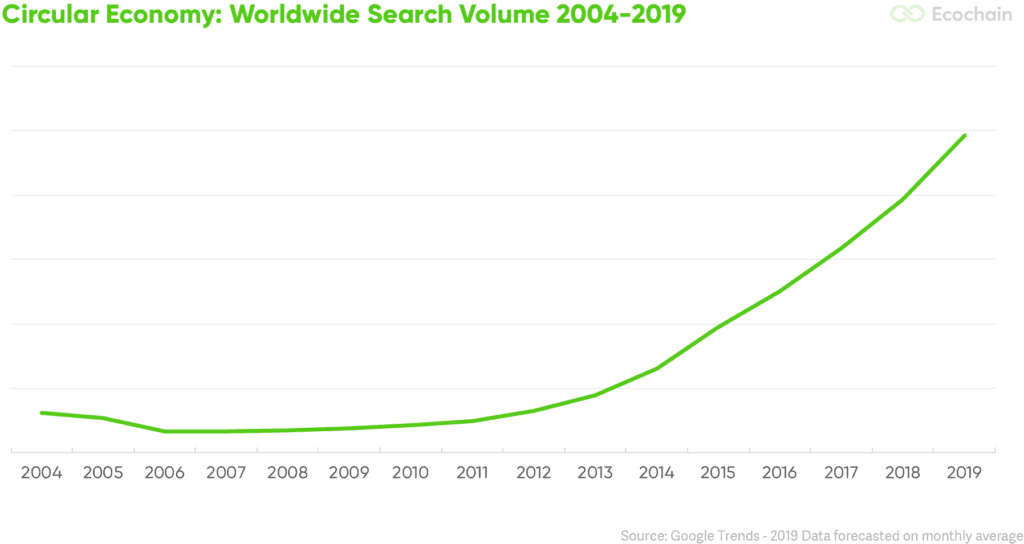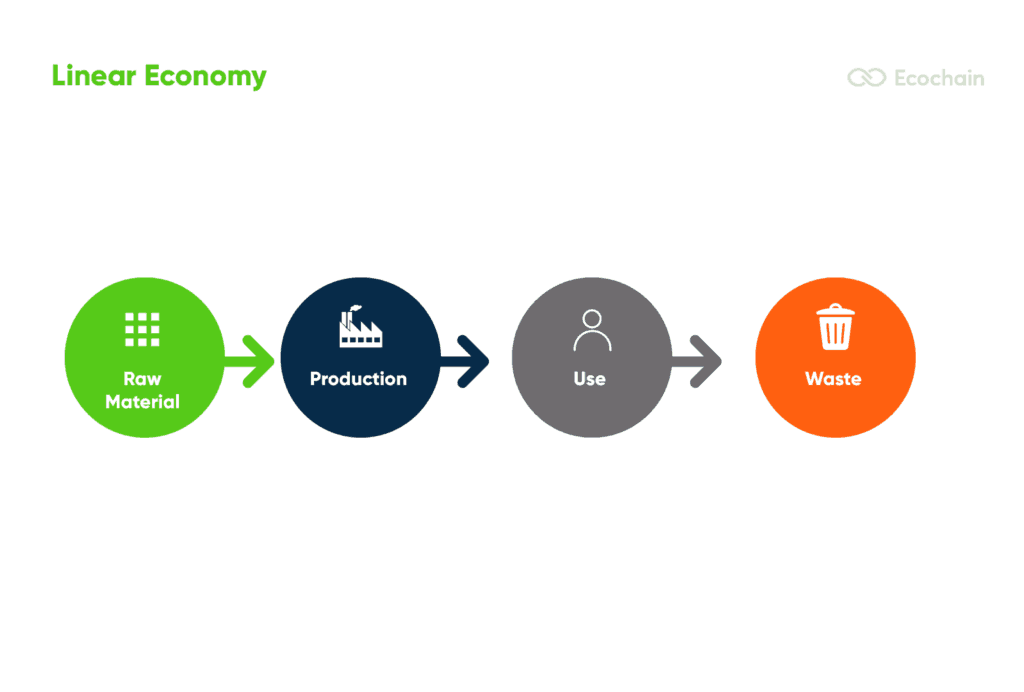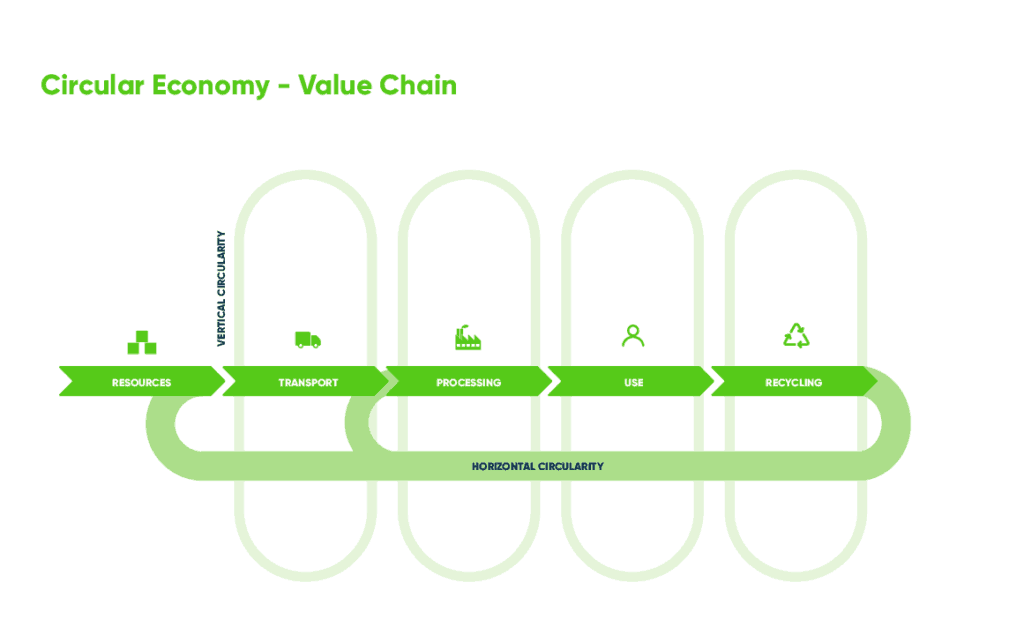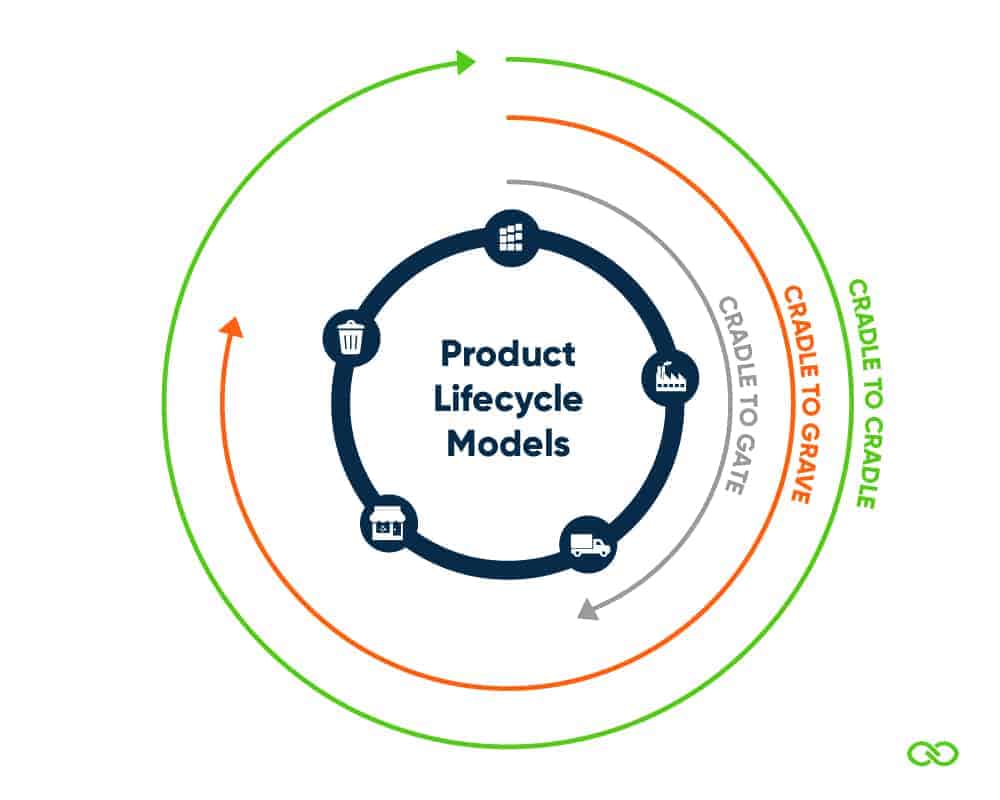The Circular Economy has gained an incredible amount of traction in recent years: Since 2010, the amount of searches on the internet for the term has increased by more than 1000%, as you can see in the graph below.

Many different organizations have been involved in creating this momentum – the UN’s Sustainable Development Goals (SDG) and the Ellen MacArthur Foundation and Kate Raworth and her book Doughnut Economics being some of the biggest drivers for the world-wide interest in the topic.
In this article, we want to show you what
the Circular Economy actually stands for, how it is different from our current
economic system, and how nations and companies around the world implement it.
Status Quo: Linear Economy
Our current economic system is, essentially, a linear economy: Raw materials get sourced, processed and turned into a product, the product is consumed and eventually disposed of.

The vast majority of waste in this system is non-recyclable, which means that they either get burned or end up on a landfill. This not only means that valuable resources get discarded, but also that all the trash has to be stored somewhere – and, often, we send our waste to other countries to dispose of it for us, or it ends up in oceans and other places in nature.
What is waste and where does it occur?
It is easy to assume that waste is the material we throw into the bin after it has been used.
But in reality, waste is being produced along the entire value chain of a product. From sourcing of raw materials to transport and manufacturing, many resources get lost. The materials are cut and shaped into a desirable form, during transport and manufacturing resources get misplaced or damaged.
So, how could a circular economy solve these issues?
Circular Economy: Definition
The concept of a Circular Economy has been established since the 1970s, but only in recent years gained wide-spread attention. This is mainly because governments around the world have now started putting this topic on their agendas, thanks to the work of many climate advocates.
Fundamentally, the Circular Economy is an economic system in which the generation of waste is being avoided throughout the value chain.
It is a common misconception that circular only refers to a product that can be recycled at the end of its product lifecycle. In reality, most waste often occurs along the value chain. This is why we differentiate in two different ways of circularity: Horizontal and vertical circularity.

Horizontal circularity
Horizontal circularity refers to a product being re-used after the end of its lifecycle. This does not mean it does have to be turned into a raw material – it could also mean that its parts get reassembled into a new product.
Vertical circularity
Vertical circularity refers to a circular process within the value chain – for example, waste from the manufacturing process being reused.
Fundamental concepts for the circular economy
There are a couple of underlying principles that the Circular Economy is based upon.
Cradle-to-Cradle
Cradle-to-cradle is a model of the product lifecycle.

In this model, the recycling process makes the waste of the product reusable for another product, essentially “closing the loop”.
Circular design
Circular design is an essential component of the Circular Economy:
Value chains can be incredibly complex. This is why it is often necessary to completely rebuild parts of it. Circular design is a relatively new approach to sustainable design, in that it designs circular products and processes from the ground-up.
Circular Economy: How does it look like in practice?
Now that you have understood the concept of a circular economy, how do companies implement it in practice?
Lightweight Containers, a packaging company from the Netherlands, discovered that one of their processes produced a waste product that could, in fact, be turned into granules. These granules could then be re-used as a raw material for the production process. This is an example of vertical circularity that saved more than 80% of the company’s production waste.
How to measure circularity through the Environmental Cost Indicator
Circularity is sometimes considered hard to measure, because it has a direct impact on many different impact categories. This is where the Environmental Cost Indicator can help: It is a KPI that consolidates many different impact categories into one monetary value, that allows for direct comparison of the environmental costs of different products.
The graphic below shows how the connection between circularity, LCA and ECI works in practice.


